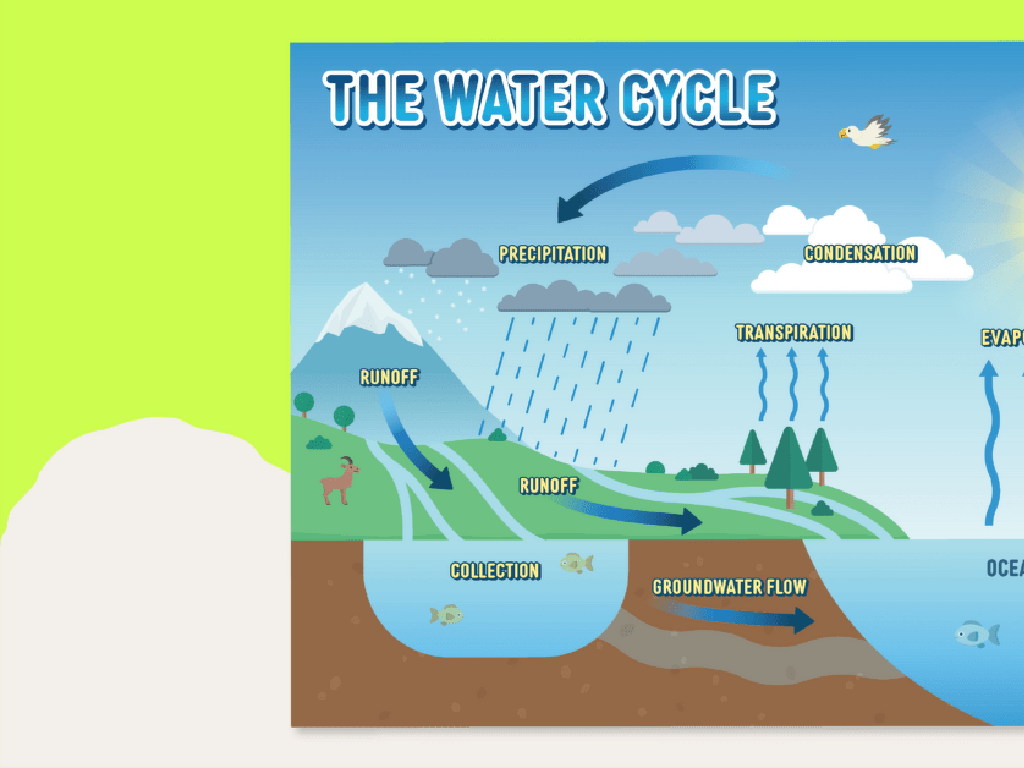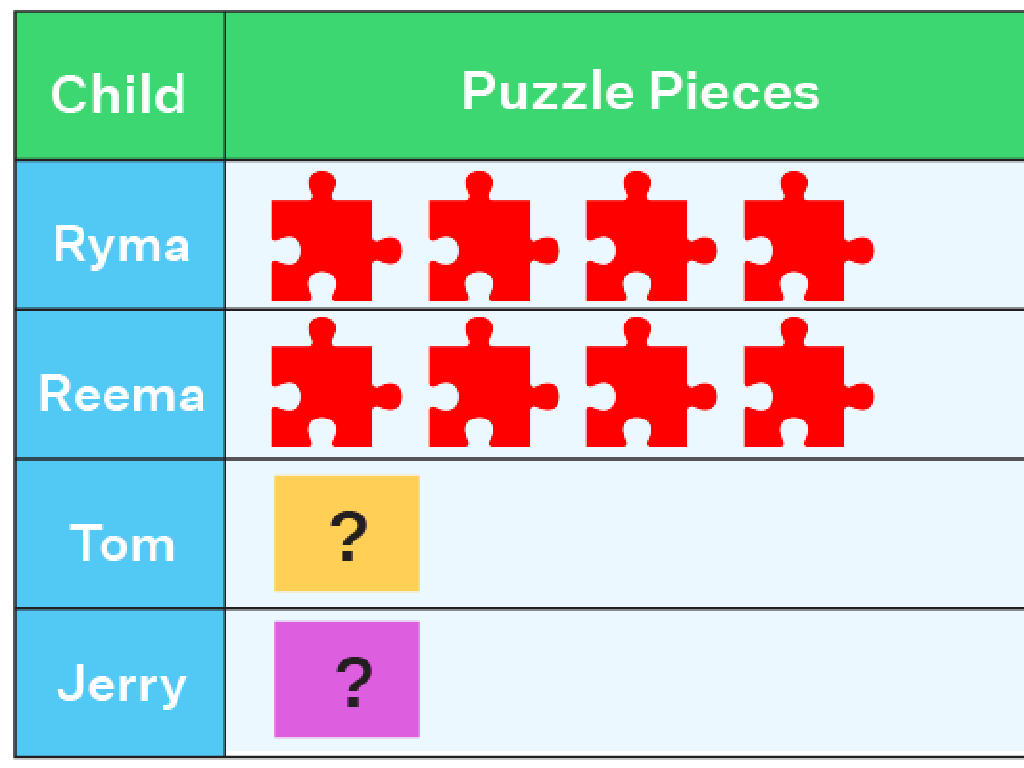Name Countries Of Africa: Region 4
Subject: Social studies
Grade: Eighth grade
Topic: Africa: Geography
Please LOG IN to download the presentation. Access is available to registered users only.
View More Content
Exploring Africa: Region 4 Countries
– Africa’s diversity in geography
– Africa is not a monolith; it has deserts, rainforests, and savannas.
– Geography’s role in culture & history
– Geography has shaped Africa’s diverse cultures and historical events.
– Focus on Region 4 countries
– Region 4 includes countries like Nigeria, Niger, and Cameroon.
– Significance of learning these countries
– Understanding these countries helps appreciate Africa’s complexity.
|
This slide introduces students to the geographical diversity of Africa and sets the stage for a focused look at the countries in Region 4. Emphasize that Africa’s geography is not uniform and includes a wide range of ecosystems, which have played a significant role in shaping the continent’s cultural and historical narrative. Highlight the importance of geography in understanding the development of societies and economies within Africa. The slide should also prepare students for a deeper dive into the specific countries of Region 4, encouraging them to consider how geography has influenced the lives of people in this subregion. Provide a map for visual aid and encourage students to locate Region 4 on the map as part of the learning process.
Exploring Africa: Region 4
– Overview of Africa’s 5 regions
– Africa is divided into North, West, Central, East, and Southern regions.
– Unveiling Region 4: Key countries
– Region 4 includes countries like Rwanda, Kenya, and Tanzania.
– Characteristics of Region 4
– Known for diverse wildlife, landscapes, and cultural heritage.
– Significance of studying Region 4
– Understanding Region 4’s role in ecology, economy, and global culture.
|
Begin with a brief introduction to the five distinct regions of Africa to provide context. Then, delve into the specifics of Region 4, which encompasses East African countries. Highlight key nations within this region and discuss their unique geographical features, wildlife, and cultures. Emphasize the importance of learning about Region 4, considering its rich biodiversity, significant contributions to the continent’s economy, and the influence of its cultural practices on the global stage. Encourage students to appreciate the diversity within Africa and the relevance of its regions in the broader scope of global studies.
Exploring Africa: Region 4 Countries
– List of Region 4 countries
– Includes Zambia, Angola, and Malawi among others
– Geographical location of Region 4
– Located in the southern part of Africa
– Major physical features in Region 4
– Features include the Zambezi River and Victoria Falls
– Significance of these features
– These features impact climate, economy, and culture
|
This slide aims to introduce students to the countries of Region 4 in Africa, focusing on their geographical location and major physical features. Region 4 encompasses several countries in the southern part of Africa, each with unique landscapes and natural wonders such as the Zambezi River and Victoria Falls. Understanding these features provides insight into the region’s climate, resources, and the daily lives of its inhabitants. Encourage students to research more about how these physical characteristics influence the economy and culture of the countries in Region 4. This will help them appreciate the diversity and complexity of Africa’s geography.
Exploring Africa: Region 4 Countries
– Flags and capitals of Region 4
– Study the unique flag and learn the capital city of each country
– Language and population insights
– Explore the primary languages spoken and understand population scales
– Fun facts about each country
– Discover an interesting or unique aspect of every country
– Interactive map activity
– Use an interactive map to find where each country is located
|
This slide aims to provide a comprehensive overview of the countries in Africa’s Region 4. Students will learn about the flags and capital cities, which helps in visual recognition and geographical literacy. Discussing the languages and population will give insights into the cultural and demographic aspects of each country. Including a fun fact will engage students and make the learning process more memorable. The interactive map activity is crucial for reinforcing their spatial awareness and geographical knowledge. Encourage students to take notes and ask questions during the map exploration to facilitate active learning.
Cultural and Geographical Significance of Africa’s Region 4
– Diversity in Region 4 culture
– Region 4 is a tapestry of various ethnic groups, languages, and traditions.
– Region 4’s geographical landmarks
– Landmarks include the Sahara Desert, Nile River, and Mount Kilimanjaro.
– Geography’s impact on lifestyle
– The local geography dictates food, housing, and occupations in the region.
– Interrelation of geography and culture
– Cultural practices often reflect the adaptation to the region’s geography.
|
This slide aims to highlight the rich cultural diversity and significant geographical features of Africa’s Region 4. Students should understand that Region 4, which includes countries like Nigeria, Kenya, and Tanzania, is home to a multitude of ethnic groups, each with its own language and traditions. Key geographical landmarks such as the Sahara Desert, the Nile River, and Mount Kilimanjaro are not just tourist attractions but also play a crucial role in the daily lives of the inhabitants. The geography of the region influences the local culture and lifestyle, from the type of food that is available to the kind of houses that are built. Encourage students to think about how living near a major river or mountain range might affect their own lives, drawing parallels to the experiences of people in Region 4.
Challenges & Opportunities in Africa: Region 4
– Environmental challenges faced
– Issues like desertification and water scarcity
– Socio-economic hurdles
– Poverty, education, and healthcare gaps
– Development & cooperation opportunities
– Trade agreements, technology, and education initiatives
– Case study: Region 4 success story
– Example: Rwanda’s economic growth and stability
|
This slide aims to provide students with an understanding of the complex challenges and potential opportunities for countries in Africa’s Region 4. Environmental challenges include desertification, deforestation, and water scarcity, which directly impact the livelihoods of people. Socio-economic issues such as poverty, limited access to education, and inadequate healthcare systems are significant hurdles. However, there are opportunities for development through regional cooperation, trade agreements, and investment in technology and education. A case study of Rwanda can be discussed, highlighting its post-conflict economic recovery, political stability, and investment in technology as a model for success in the region. Encourage students to think critically about how these challenges and opportunities affect the lives of people in Region 4 and what role international cooperation plays in development.
Class Activity: Mapping Africa’s Region 4
– Teamwork: Label Region 4 countries
– Present your map to the class
– Share interesting country facts
– Find unique cultural, historical, or geographical facts about each country
– Discuss Africa’s global significance
– Why is it important to learn about Africa’s geography?
|
This class activity is designed to engage students with the geography of Africa, specifically Region 4. Divide the class into small groups and provide each with a blank map of Africa’s Region 4. Each group’s task is to correctly label the countries in this region. After the labeling, groups will present their maps to the class and share interesting facts they discovered during their research. This could include unique cultural traditions, historical events, or geographical features of the countries. Conclude the activity with a class discussion on the importance of understanding Africa’s geography, emphasizing its relevance to global economics, politics, and culture. This will help students appreciate the diversity and significance of African countries in a global context.
Conclusion: Africa’s Region 4
– Recap of Region 4 countries
– Geography’s impact on culture
– How physical features influence traditions and lifestyles
– Society shaped by geography
– The role of natural resources and terrain in societal organization
– Essay on geography and development
|
As we conclude our study of Africa’s Region 4, it’s important to reflect on the diverse countries that make up this area. We’ve explored how geography not only shapes the physical landscape but also has a profound impact on the culture and society of a region. For homework, students will write a short essay on how geography can influence a country’s development, considering factors such as access to natural resources, climate, and terrain. This will help them synthesize their knowledge and apply it to real-world scenarios, deepening their understanding of the intricate relationship between geography and human development.






